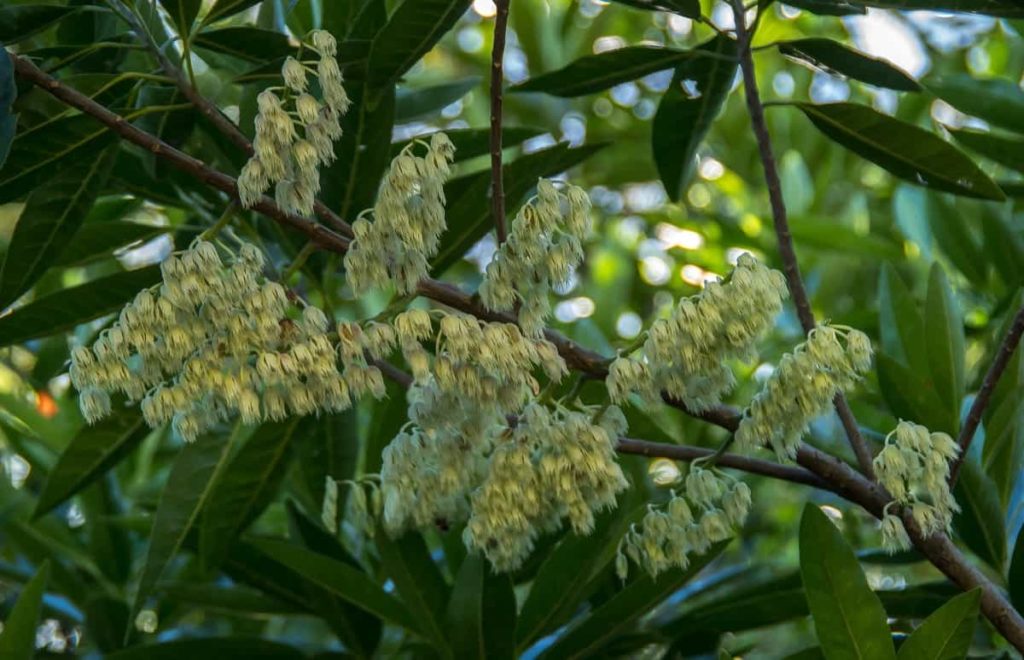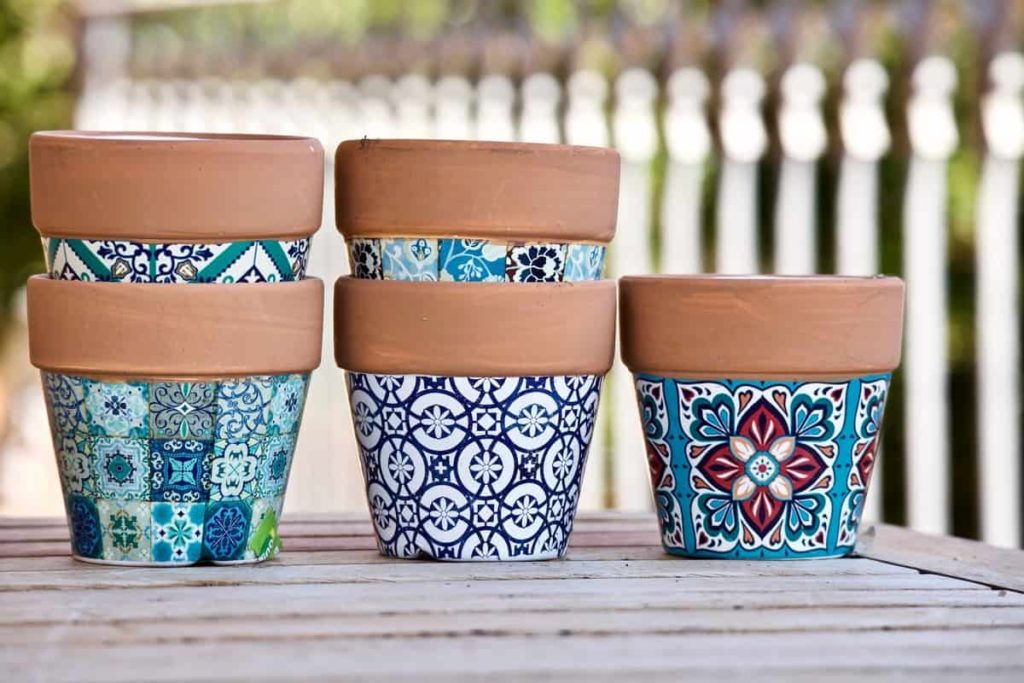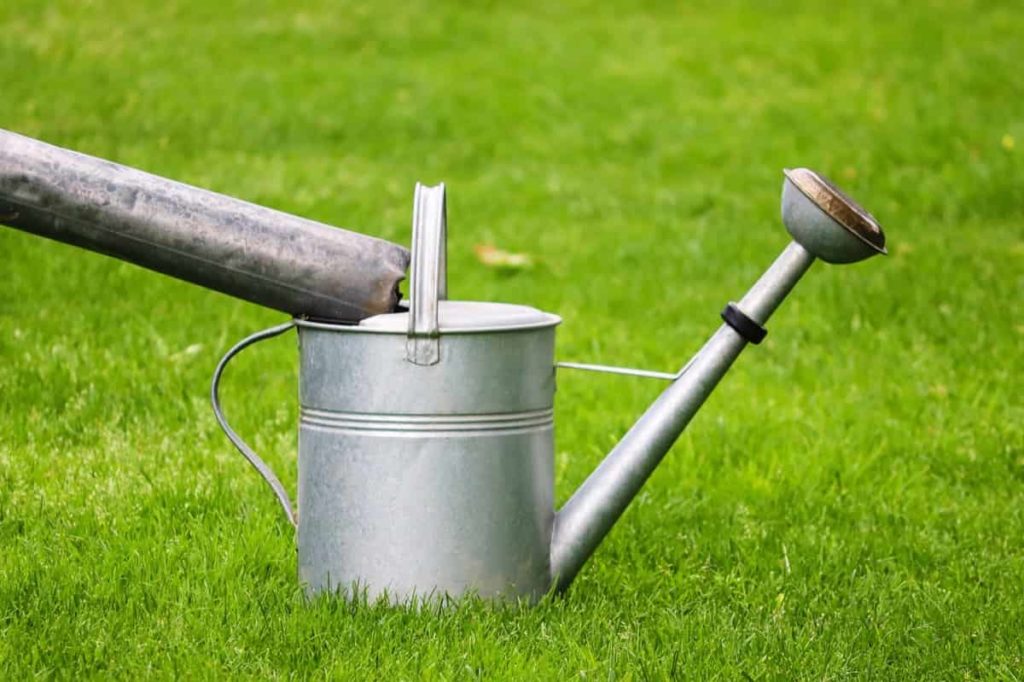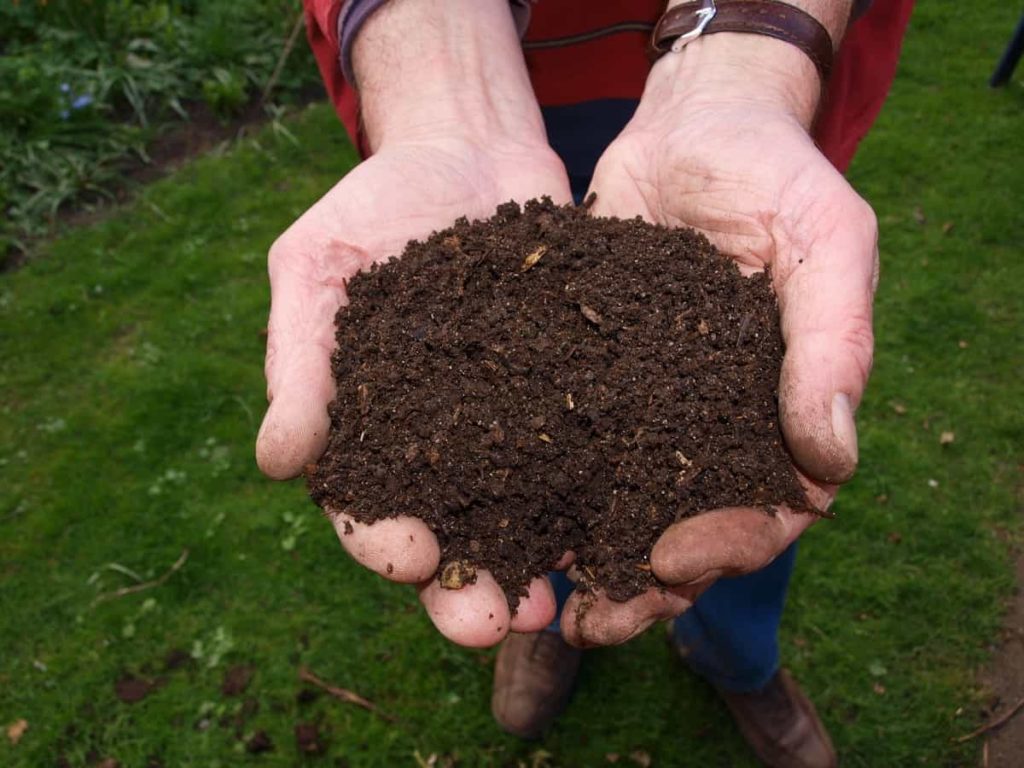Rudraksha trees are large tropical evergreen trees that are native to India and are known for their bright blue fruits with large seeds used to make sacred beads. It grows in different regions like the Himalayas, Nepal, Sri Lanka, Indonesia, and India. Rudraksha is an evergreen tree that can grow up to a height of 60 to 80 feet.
About 35 varieties of this plant are available all over India. But this type is mostly available in the region that is spread by the Ganges plains at the foot of the Himalayas. It is a fast-growing tree that can start bearing fruit after 3 to 4 years of plantation. Let’s check out how to grow Rudraksha tree at home.

If you live in a tropical climate and want to raise your Rudraksha tree, you can plant seeds and grow your own. Although your seeds will take some time to grow, you will have a small plant that you can put in a pot or transplant into the ground. As long as you provide appropriate growing conditions, you can expect your tree to produce fruit after about 7 years.
Rudraksha tree looks somewhat like a mango tree. Rudraksha tree has the potential to produce one to two thousand Rudrakshas every year. From its root to leaves, the Rudraksha tree is full of many beneficial features. Rudraksha tree leaves have antibacterial properties. Drinking Rudraksha water cleanses the blood and increases immunity. Rudraksha powder is used in cosmetics to revive the skin and enhance the natural glow.
Types of Rudraksha
Rudraksha tree produces seeds in different structures. It is promisingly named Mukhi which mentions face. Rudraksha trees in Nepal are highly estimated and Indonesia has very few measured dabs. 27 Mukhi dabs are found in Nepal. 1 Mukhi Rudraksha Dot is the most unusual and most encouraging globule. 4 Mukhi, 5 Mukhi, and 6 Mukhi are very regular.
Climate, and soil requirements for growing Rudraksha
The Rudraksha plant grows well in tropical humid climates. It also grows in a variety of soils, especially in alluvial, laterite, red and black soil sown with enough organic matter. However, it has been observed that plants do not produce fruits in the hot conditions of sub-regions. Generally, the Rudraksha tree needs a temperature of fewer than 35 degrees to grow. If Rudraksha trees are grown in the house, place them under the shade and protect them from the sun.
In case you miss this: Top 25 Vegetables To Grow In Aquaponics

The use of well-drained soil rich in manure is ideal for growing Rudraksha plants. You can also use nutritious, fertilizer-based soils, as they are easily available. It is advisable to use this soil when you are planting your plant in the pots. Before adding soil to the pot, make sure you add a good amount of drainage material like gravel, pebbles, etc. based on the pot.
Propagation of Rudraksha
Rudraksha plants can be propagated by both seeds and the air layer. However, the method of air layer/moss was very successful and several small plants were developed through this method. Fill a bowl with warm water. Pour the seeds into the water and leave them to soak to help them get easier.
After about 2 days, drain the water and dry the seeds. Look up or down the seed to find out where the sides lines intersect. Hold the seed straight and beat where the lines gently cut with a hammer. Continue hitting the seed until it breaks into multiple pieces to help expose the inside and grow them quickly. Continue to break whatever seeds you are planting.
The best pot for growing Rudraksha
If you want to grow your plant in a pot, pick a pot that is 19 to 22 inches deep and at least 7-10 inches wide. Another thing to make sure your container should have good drainage. Set your pot on its flood tray in a warm, bright room. If possible, place the pot in the greenhouse.
If not, keep it indoors in a temperature control room. Cover the drain hole under the pot with a large river stone. Rudraksha likes moisture, they will appreciate a lot of moisture in their soil as well. The river stone still allows some flow, but keeps most of the water in the soil.
In case you miss this: Top 20 Quick Growing Herbs In Pots/Containers

Planting Rudraksha seeds into a pot
- Create a soil mixture that is 60% peat moss and 40% perlite and mix them well. Put the potting medium in your pot and level the surface. Leave about 1 inch between the top lip of the pot and the rising medium level so that the pot does not overflow when you water it. If you do not have access to pet moss and perlite, substitute soil and gardening sand of equal parts.
- Place the seeds so that they are about 1 to 2 inches away from each other so that they do not compete with nutrients. Use your finger to push down the seeds so that the broken edges face down. Then, level the potting medium so that it covers the seeds. Always plant multiple seeds in the pot even if you want only 1 tree as you will be able to pick healthy growth. Slowly pour water onto the potting medium. Be careful not to disturb seeds, otherwise, they may loosen and not grow properly. Allow water to be drained through potting medium and out of pot drainage holes.
- If you want to keep the pot inside, place it with a south-facing window so that it gets indirect sunlight and shade throughout the day. Otherwise, place the pot outside under a shady tree if the temperature does not sink below 10°C. Rudraksha seeds will not grow in cold temperatures.
- When you check the pot every day, look for small green sprouts or leaves coming out of the potting medium that will usually appear within 45 days. Continue to water the sprouts as normal as they continue to grow so that they are healthy. Seeds can take up to 1 year to sprout if the temperature varies in your area. Some of your seeds may not be born sprouts.
Water requirement for growing Rudraksha
Water the Rudraksha plants well. If you are planting Rudraksha in the open yards, you can make a little slope to prevent waterlogging in the area. Water at least twice a day in summer and once in others. You don’t have to water your Rudraksha plant during the rainy season and once established.
Place your finger in the potting medium and check if it feels wet 2 inches below the surface. If the potting medium is dry, pour water into the pot until you see water coming out of its drainage holes. Otherwise, avoid watering the seeds for this day. Normally, you’ll have to water the seeds every other day, but it may vary depending on the climate of your area.
In case you miss this: Amazing Gardening Ideas for Beginners

Rudraksha tree care
- Get 10-10-10 NPK fertilizers and measure 9.4 grams sprinkle manure in the soil around the Rudraksha tree in the early spring, making sure it doesn’t touch the stem. Immediately water the soil so that the manure gets wet and provides nutrients for the roots.
- If fertilizer touches the tree trunk, it can release burn marks or cause the tree to die. Be careful not to overfertilize as it can affect the chemical makeup of the soil and cause your tree to die. Organic fertilizers are better than chemical fertilizers. Using rotten cow manure is perfect for your plant. In addition, you can also use potash-rich manure for your plant.
- Cut the branches that are broken or have yellow or brown leaves growing on them. Continue cutting branches of any other disease you notice.
- Never remove more than a third of the tree’s growth as it can cause the tree to die. Generally, the Rudraksha tree is free from pests, diseases, and chemicals. However, it soaks up enough water, it can catch fungal infections and rotten roots. To avoid this, avoid wetting leaves.
- Remove weeds at least once a week to see if there is anyone near the base of the trunk. Hold the herbs as close to the roots as possible and pull them straight out of the ground. If you leave any of the roots behind, carefully take them out of the soil so that they do not grow again.
- You can add 2-inch layers of mulch around the tree to help prevent weed growth and maintain moisture so that you don’t have to water so frequently.
Transplanting Rudraksha plant to the ground
- Continue watering the seedlings and leave them in a sunny spot throughout the day so they can grow. Measure the height of the seedlings so you can track their size. Once they reach at least 3 feet, you can safely remove them from their pot to transplant them.
- Typically, it will take about 1 to 2 years for the seedlings to grow large enough for the transplant. Look at the place where you want to plant trees throughout the day to make sure it gets at least 4 hours of shade. If you can’t find an area that gets shade, your tree won’t grow that much because it regularly thrives under the canopy cover in the wild.
- Dig the holes in the middle of the growing area so that there is space for your tree to grow. Make the hole at least twice the depth and twice the width of the original pot, otherwise, there will be no scope for root expansion in the tree. If you are planting more than 1 Rudraksha tree, place them at a distance of 10 feet. Find the seedling that has the straightest trunk and its leaves are not damaged or yellow. Carefully dig a circle around the seedlings to loosen the potting medium around the roots. Hold the base of the trunk and slowly pull the seedlings up and out of the pot. Be careful not to damage the roots of the tree as it can be affected by how well it grows when you transplant it into the ground.
- To help improve its drainage you mix the soil well with the same amount of sand from the dug hole. Backfill the hole with the mixture until it is halfway through. Level the soil level so that there is a strong foundation to rest on the roots of the tree. You can also add an equal portion of fertilizer to the mixture to help add more nutrients to the soil.
- Set the seedlings in the middle of the hole and hold the trunk so that it remains vertical. If you do not keep the stem vertical, the tree will become crooked and the root system will not be strong enough. If you see water accumulating around the tree, let it soak in the soil before adding more.
In case you miss this: Mint And Sage Companion Plants, Growing Tips

When and how to grow rudraksha tree at home
It takes about five years to bear the flowers after planting. In its natural environment, it blooms during summer, in May and June. Fruits ripen from November to December. Start looking for round, blue fruits, called blueberry beads, in late summer or fall. Although fruits have an unpleasant bitter taste, many use the large seeds inside as beads in sacred necklaces. If you want seeds from inside the fruit, peel the meat and wash the seeds in clean water. Clean seeds are dried and polished in oil. It protects seeds/beads from getting damaged.
- Asparagus Seed Germination and Variety Selection
- Seasonal Flower Gardening: Best Practices for Spring, Summer, Fall, and Winter
- How to Grow Hibiscus from Flower
- Plantation Ideas for Home Decoration: A Beginners Guide
- Flower Garden Designs and Layouts for Beginners
- Planting and Spacing Techniques in Papaya: A Beginner’s Guide
- Growing Gold: Essential Techniques for Planting Pineapples
- How to Make Kalanchoe Plant Bushy: Home Remedies and Solutions
- 11 Reasons Why Your Gardenia is Not Blooming: Home Remedies and Solutions
- Eco Elegance: The Guide to Designing a Drought-Tolerant Landscape
- Gardening on a Slope: Strategies for Hillside Landscaping
- Nourish and Flourish: Top Organic Mulches for Thriving House Plants
- Everything You Want to Know about Indian Mogra Flower: Discover Uses and Growing
- Green Thumb Success: Expert Tips for Cultivating Greenhouse Pumpkins All Year Round
- Maximize Growth & Flavor: The Ultimate Guide to Companion Planting in Herb Gardens
- How to Control Rhododendron Problems Naturally: Home Remedies and Organic Ways to Fix Them
- Natural Magic: The Remarkable Benefits of Cinnamon for Plants
- Best Steps to Revive Dying Tulip with Natural and Organic Treatment
- 10 Reasons Why Your Angel Trumpet is Not Blooming: Remedies and Treatment
- How to Fix Periwinkle Leaf and Flower-Related Problems: Natural Remedies and Solutions
- How to Fix Zinnias Leaf and Flower Problems: Discover Natural and Home Remedies
- Organic Steps to Induce Lemon Tree Flowers: A Comprehensive Guide
- Bloom Booster: Crafting the Perfect Homemade Bougainvillea Fertilizer
- Optimizing Growth: A Guide to Applying NPK Fertilizer for Potted Plants
- 10 Best Homemade Fertilizers for Rubber Plant: DIY Recipes and Application Method
- How to Boost Female Pumpkin Flowers: Effective Steps for More Flowers and High Yields
- Transform Your Indoor Garden: Top Benefits of Pink Salt for Houseplants
- 10 Best Homemade Fertilizers for Peacock Plants (Calathea): Easy DIY Guide
- Unlock Blooms: 9 Reasons Why Your Potted Chrysanthemum is Not Blooming
- 8 Reasons Why Your Potted Hibiscus is Not Blooming: Fix it with Simple Solutions
- Unlock Blooms: 9 Key Reasons Your Potted Frangipani Won’t Flower
- 10 Reasons Why Is My Ice Plant Not Blooming: Remedies and Treatment
- 10 Reasons Why My Potted Hydrangea Not Blooming: Treatment and Remedies
- 10 Reasons Why is My Wisteria Not Blooming: Remedies and Treatment
- 10 Reasons Why is My Goldfish Plant Not Blooming: Remedies and Treatment
- Maximize Your Space: Ultimate Guide to Balcony Gardening with Grow Bags